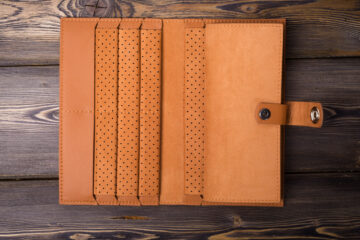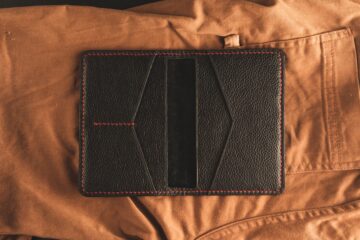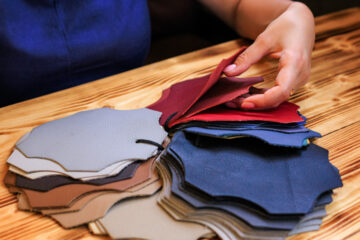Exploring the World of Leather Finishes: From Classic to Contemporary
Leather making is one of the most ancient practices, dating back to 5000 BC. With its exceptional durability and timeless beauty, leather represents sophistication and luxury in the modern day. It defines the texture, appearance, and character of the leather, creating a diverse range of styles and functionalities. Whether designing a watch band or a bag, understanding leather finishes will help you choose the right material for your design.
The Leather Finishing Process
Leather finishing is an essential step in the leather manufacturing process as it influences the aesthetics and durability of the leather. This process can be divided into three main categories: surface coating, impregnation, and pigment finishing. A surface coating is the most common finish, and it involves applying a thin layer of polyurethane or acrylic finish to give added protection and durability to the leather surface. Impregnation is a leather finishing process that involves applying oil, wax, or resin to give it water resistance. Finally, pigment finishing involves using a color layer to create a non-natural leather color and add durability and stain resistance to the leather.
Leather finishing is a complex and skilled process that requires expertise to achieve consistent and high-quality results. The choice of finishing techniques and treatments can vary depending on the leather type and the final product’s intended application.
Types of Leather Finishes
The three most common types of leather finishes are aniline, semi-aniline, and pigmented. Here are some of the key features and differences between these finishes.
Aniline Finish
Aniline finishes use dyes that allow the natural grain and texture of the leather to shine through, providing a natural look. This finish provides a transparent coloration, allowing the leather to retain its natural color and texture. This natural leather look is very soft and comfortable, making it a popular choice for fashion items and high-end furniture. However, these soluble dyes make the leather prone to scratches and stains.
Semi-Aniline Finish
Unlike aniline leather, semi-aniline leather has a thin protective coating, making it more durable and less prone to stains and scratches. This finish retains the same natural texture and coloring as aniline leather while providing some resistance to wear and tear. However, semi-aniline leather has less protection than other leather finishes and may require more care and maintenance.
Pigmented or Top-Grain Finish
Pigmented finishes provide a solid color coating, creating a high-fashion option. This coating conceals the leather’s natural color, grain, and imperfections. It is commonly used for handbags, watch bands, and automotive upholstery. Pigmented finishes make the leather highly durable and resistant to stains. With this increased durability comes several drawbacks. Pigmented leather may have a less natural appearance, feel, and texture, as this finish provides a uniform, unblemished appearance.
Understanding the various types of leather finishes empowers designers to choose the right finish that aligns with their design, user needs, and preferences.
Factors to Consider When Choosing a Leather Finish
When choosing a leather finish for a small goods design, there are several considerations to account for. First, think about the product’s intended use and audience. For example, if you are designing a leather backpack for students, pigmented or semi-aniline finishes may be preferred for enhanced durability. Alternatively, if you are designing a leather clutch for evening wear, aniline finishes may be preferred for their natural beauty.
It is also important to consider style preferences regarding leather finishes. Aniline finishes are typically associated with a more traditional and timeless aesthetic because they showcase the natural beauty of the leather. Alternatively, pigmented finishes offer a clean and contemporary look with its sleek and uniform appearance.
Each leather finish has different maintenance requirements, so it is important to consider your audience’s devotion to leather care. Pigmented finishes are typically the easiest to maintain due to their stain resistance, while aniline and semi-aniline require more careful handling and conditioning. Additionally, its durability makes protective coatings, like pigmented and semi-aniline finishes, more likely to last longer.
By considering these factors, you can make an informed decision when selecting a leather finish that best suits your needs, preferences, and design. Each choice contributes to the overall character and functionality of the leather product, ensuring it aligns perfectly with your intended use and style preferences.
Partner with Softline Brand Partners
Softline Brand Partners has earned the trust of iconic brands worldwide, serving startups to Fortune 500 companies. Our expertise spans a wide range of soft goods, from small leather goods and bags to home goods, watch straps, patches & labels, and strap goods. Our vertically integrated design and manufacturing process allows us to tailor every detail to your specifications. From sourcing raw materials to precision manufacturing, we ensure that each product meets our exacting standards. Contact us today to embark on a journey of quality, precision, and success in soft goods manufacturing.











